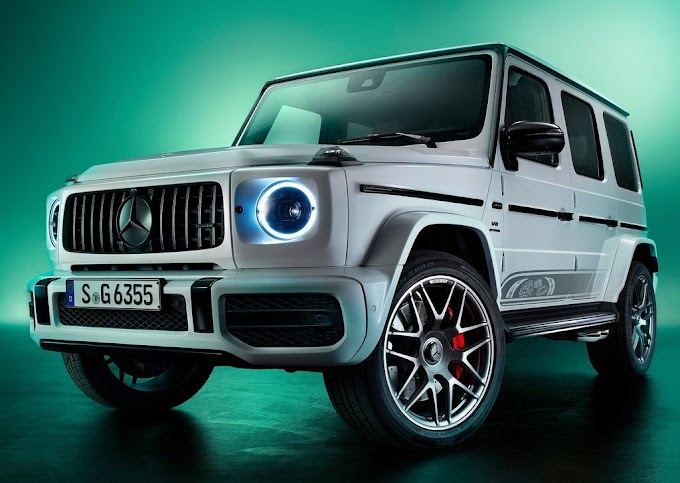The unveiling of the 2026 Toyota HiLux marks a pivotal moment in the history of the world's most trusted pickup. For decades, the HiLux name has been synonymous with unbreakable reliability, rugged capability, and a sheer mechanical endurance proven across the harshest terrains on Earth. Its transition into the electric era with the new HiLux Battery Electric Vehicle (BEV) variant is not just an upgrade; it is a foundational shift that signals Toyota's "multi-pathway" commitment to decarbonization while meticulously preserving the legendary HiLux DNA. This review analyses the early details, balancing the excitement of electrification with the pragmatic expectations of a working utility vehicle.
A Design That Blends Heritage and Future
The ninth-generation HiLux, including the BEV, introduces an aggressive "Cyber Sumo" design theme that manages to look both tough and modern. The exterior boasts a complete redesign of the front and rear, featuring slim-line LED headlights and a muscular stance. Crucially, the BEV variant is easily identifiable by its unique, more aerodynamic features—a largely closed-off front fascia in place of the traditional grille and dedicated alloy wheels, signifying its electric heart.
However, the real revolution is inside. Toyota has finally brought the HiLux into the modern age with a significant technological overhaul. The new cabin is inspired by the Land Cruiser Prado, boasting a much-needed uplift in comfort and ergonomics. High-spec models feature a clean, sophisticated dash with dual 12.3-inch displays for the driver's cluster and multimedia. A clever blend of digital interfaces and preserved physical controls for climate and four-wheel-drive systems shows Toyota has listened to its core user base, prioritizing utility and ease of use over pure gimmickry. The adoption of Electric Power Steering (EPS) is a significant functional upgrade, promising improvements in low-speed maneuverability, high-speed stability, and enabling advanced lane-keeping safety systems.
The Electrified Core: Performance and Range
The powertrain is the heart of the new HiLux BEV's story. It features a 59.2 kWh lithium-ion battery pack strategically placed under the floor, preserving the body-on-frame architecture that is critical to its off-road and load-carrying integrity. The dual-motor, permanent All-Wheel Drive (AWD) setup, with one eAxle on each end, produces a combined output of 144 kW (193 hp), splitting torque with a focus on the rear axle (approx. 205 Nm front and 268 Nm rear).
For a vehicle of its size and intended use, the initial figures present a practical, rather than revolutionary, proposition:
Claimed WLTP Range: Approximately 240 km (150 miles)
Payload Capacity: Approximately 715 kg
Towing Capacity: Approximately 1,600 kg (braked)
While the range and load figures are immediately less competitive than the diesel's 3,500 kg towing and 1-tonne payload, Toyota has been clear: the initial HiLux BEV is primarily targeted at large mining fleets and businesses with strict ESG (Environmental, Social, and Governance) targets. For these fleet operators, its use will be confined to predictable, shorter routes (e.g., mine sites, inner-city logistics) where charging infrastructure is readily available, making the 240 km range entirely workable.
The immediate takeaway is that this first-generation HiLux BEV is a purpose-built electric work tool, not a long-range family adventure vehicle. Its capabilities are defined by its target market—a strong, reliable, zero-emission solution for localized fleet operation.
Uncompromised Off-Road Credibility
What is perhaps most impressive is Toyota’s assurance that the transition to electric power does not dilute the HiLux’s off-road prowess. The BEV retains the signature body-on-frame construction and is engineered with specific protections for the under-floor battery pack against damage and water ingress.
Key off-road features include:
Identical Wading Depth: The electric version is claimed to maintain the 700 mm wading depth of its diesel sibling.
Advanced Traction: Standard Multi-Terrain Select (MTS) adapts the dual-motor torque and braking control to suit various surfaces, effectively mimicking the low-range capability of the conventional model.
Drivability: Early reports from test drives praise the BEV’s smooth, quiet, and comfortable ride, with electric torque providing instant and precise control—a significant advantage for complex off-road maneuvers or heavy hauling at low speeds. The new suspension tune, along with hydraulic engine and cabin mounts, also contributes to a noticeable reduction in noise and vibration, transforming the HiLux driving experience.
The Multi-Pathway Strategy and Market Positioning
The HiLux BEV does not stand alone. It is part of a larger, diversified lineup that includes the new 48V mild-hybrid diesel, traditional diesel/petrol engines, and a confirmed Hydrogen Fuel Cell Electric Vehicle (FCEV) variant scheduled for 2028. This multi-pathway approach is Toyota's measured response to global energy and regulatory diversity, ensuring a HiLux option for every market and operational need.
The BEV's 2026 launch will place it directly in a rapidly emerging segment alongside rivals like the Isuzu D-Max EV, which features a similar focus on fleet utility. Toyota's undeniable strength lies in the HiLux's unmatched reputation for reliability and durability, backed by its world-class warranty factors that carry enormous weight for fleet managers calculating Total Cost of Ownership (TCO).
Conclusion and Final Verdict
The 2026 Toyota HiLux BEV is more than just a debut; it is a calculated evolution. While private buyers may find the initial 240 km range and reduced payload/towing figures a compromise compared to other electric trucks or the HiLux diesel, this critique misses the target.
This first-generation electric HiLux is a highly focused product designed to be an unstoppable, zero-emission workhorse for corporate fleets. It brilliantly leverages the inherent advantages of electric motors—instant torque, smooth operation, and quietness—to enhance the HiLux’s traditional strengths in off-road control and robust build quality. The new "Cyber Sumo" styling and thoroughly modernized, tech-rich cabin ensures that the HiLux remains visually relevant and a comfortable place to be, finally shedding the utilitarian harshness of its predecessors.
The HiLux BEV's success will be measured not by maximum range, but by its ability to reliably execute its core duties in high-demand industrial and commercial settings. By maintaining its legendary body-on-frame structure and off-road capability, the 2026 HiLux BEV successfully proves that its unbreakable spirit can be fully electrified.




























0 Comments